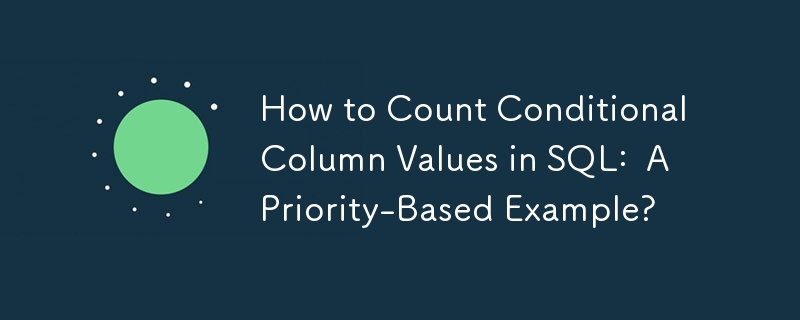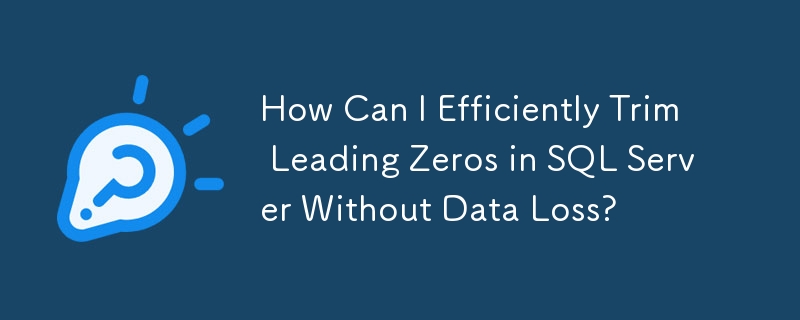Found a total of 10000 related content

Best Practices for Dependency Injection in PHP
Article Introduction:The reason for using Dependency Injection (DI) is that it promotes loose coupling, testability, and maintainability of the code. 1) Use constructor to inject dependencies, 2) Avoid using service locators, 3) Use dependency injection containers to manage dependencies, 4) Improve testability through injecting dependencies, 5) Avoid over-injection dependencies, 6) Consider the impact of DI on performance.
2025-05-08
comment 0
1024
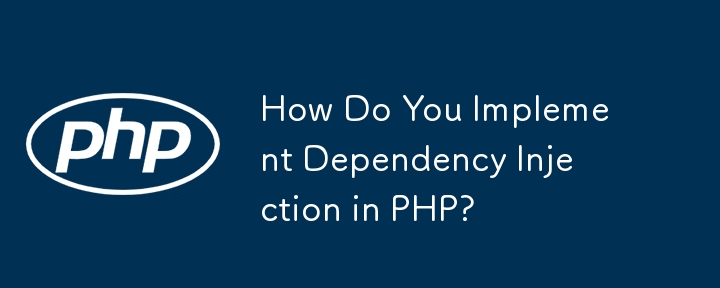
How Do You Implement Dependency Injection in PHP?
Article Introduction:Dependency injection (DI) is a way in PHP to pass dependencies to a class rather than hard-coded inside a class. 1. DI passes the dependencies of the object to the outside through constructors or settings methods to improve code flexibility and testability; 2. DI can be implemented manually, suitable for small projects; 3. Complex applications can use DI containers to automatically resolve dependencies, such as Symfony and Laravel built-in containers; 4. Common misunderstandings include premature over-design, type prompts specific implementation rather than interfaces, abuse of service locators, etc. Correct use of DI can significantly improve code quality and maintenance efficiency.
2025-07-18
comment 0
814

Understanding the Laravel Service Container and Binding?
Article Introduction:Service containers are the core tool for Laravel to manage dependencies and perform dependency injection. They reduce coupling by automatically parsing dependencies and improve code testability and flexibility. 1. It is like a "factory", which automatically creates objects and manages its life cycle; 2. Binding is used to tell the container how to create class instances. Common methods include bind() (new every time), singleton() (singleton) and instance() (existing instances); 3. Common usage scenarios include interface and implementation binding, singleton binding shared resources, and conditional binding switching implementation; 4. It is not recommended to over-binding to keep the code concise and clear. Mastering service containers helps write more flexible and maintainable Laravel applications.
2025-07-23
comment 0
222
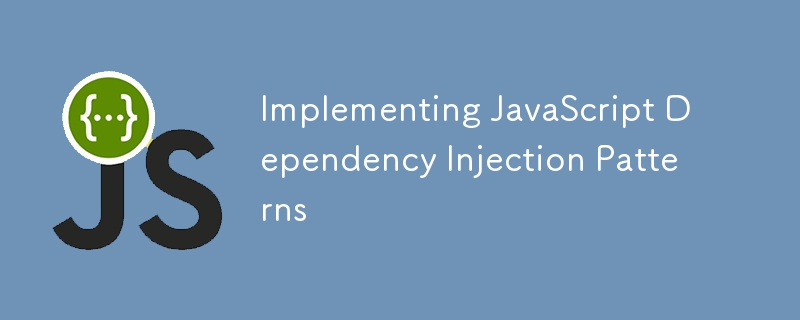
Implementing JavaScript Dependency Injection Patterns
Article Introduction:Dependency injection is useful in JavaScript because it improves testability, maintainability, and decoupling. 1. Constructor injection passes dependencies through constructors, which are suitable for class structures and are clear and easy to measure; 2. Method injection passes dependencies as method parameters, suitable for situations where dependencies are only needed in specific methods; 3. Use IoC containers such as InversifyJS or custom containers to manage dependencies uniformly, suitable for complex projects. Practical recommendations include avoiding hard-coded dependencies, keeping constructors concise, using clear naming and prioritizing interface abstraction, thereby improving code flexibility and modularity.
2025-07-18
comment 0
976

Explain the concept of Service Container 'binding' in Laravel.
Article Introduction:In Laravel, "binding" refers to the parsing method of registering classes, interfaces or services through the service container to achieve automatic dependency injection. The essence of binding is to define how to create or obtain an instance of a dependency, rather than simple storage. Common types include simple binding, interface-to-implementation binding, and singleton binding. Binding should be performed in the service provider's register() method, which is suitable for situations where switching implementations, complex construction parameters, or third-party class injection, but problems such as excessive use or uncleared binding cache should be avoided.
2025-07-16
comment 0
898

Understanding Dependency Injection in Laravel?
Article Introduction:Dependency injection automatically handles class dependencies through service containers in Laravel without manual new objects. Its core is constructor injection and method injection, such as automatically passing in the Request instance in the controller. Laravel parses dependencies through type prompts and recursively creates the required objects. The binding interface and implementation can be used by the service provider to use the bind method, or singleton to bind a singleton. When using it, you need to ensure type prompts, avoid constructor complications, use context bindings with caution, and understand automatic parsing rules. Mastering these can improve code flexibility and maintenance.
2025-07-05
comment 0
1076

Deep dive into the Laravel Service Container and Dependency Injection
Article Introduction:Laravel's service container is a core tool for managing class dependencies and executing dependency injection. It simplifies code development and maintenance by automatically instantiating objects and their recursive dependencies. 1. The service container is like a "factory" that can automatically create and pass the required objects; 2. Support constructor injection (most commonly used), method injection (used in the controller type prompt), and setter injection (suitable for optional dependencies); 3. The binding methods include simple binding, singleton binding, and interface binding implementation classes to achieve decoupling; 4. In most cases, the container automatically resolves dependencies, and can also manually obtain instances through app() or make(); 5. Alias ??can be set for the binding and the binding is registered by the service provider to improve the application organizational structure and maintainability.
2025-07-03
comment 0
899

How to create a settings management system in Laravel?
Article Introduction:Create a database table and model for storing key-value pair settings; 2. Create a service class (SettingService) to encapsulate the logic of obtaining, setting and deleting settings and implementing memory cache; 3. Register the service as a singleton in the service provider for dependency injection; 4. Optionally create a facade to support global static calls such as Setting::get(); 5. Optionally create a controller and management interface for updating settings through form; 6. Preload common settings into the configuration at the start of the application to improve performance; the system dynamically manages application-level configuration through the database, suitable for setting items that can be modified by the administrator, does not replace the environment variables in the env, with good scalability and reusability, and is complete
2025-08-04
comment 0
313

Contextual Binding in the Laravel Service Container.
Article Introduction:ContextualBinding is a mechanism in Laravel service container that determines dependency injection based on the call context, allowing different classes to inject different implementations when relying on the same interface; its usage includes: 1. Specify the target class to bind the corresponding interface implementation, such as binding the StripePaymentProcessor for AController; 2. Multiple classes or multiple interfaces can be bound at the same time, such as uniformly handling the dependency of AController and BService on LoggerInterface; applicable scenarios include: different modules use different interface implementations, test environment injection simulated dependencies, and differentiated configuration of multi-tenant applications; attention should be paid to the binding order when using it, and automatic solution should be avoided.
2025-07-26
comment 0
246

What are Laravel Facades and their purpose?
Article Introduction:LaravelFacades is a way to access objects in a service container through a static interface, simplifying the dependency injection process. They provide developers with concise and intuitive syntax, such as Cache::get() or Auth::user(), which is actually parsed by the service container to perform operations. The advantages of using Facades include: 1. Simplify the calling method, no need to manually parse containers or construct injections; 2. Improve code readability; 3. Support test mocks. Common built-in Facades include DB, Auth, Request, Session, Redirect, Response and View. However, attention should be paid to avoid abuse, prevent unclear responsibilities and hidden responsibilities
2025-07-19
comment 0
463

What is dependency injection in Laravel?
Article Introduction:Dependency injection (DI) improves code flexibility and testability by automatically parsing class dependencies in Laravel. Laravel uses service containers to automatically resolve dependencies for type prompts. For example, when declaring UserService or UserRepository types in controller constructors or methods, the framework will automatically instantiate and pass in the corresponding object. Binding interfaces to specific implementations (such as through the service provider bind method) allows flexible switching of implementation classes, suitable for different environments or test scenarios. The main advantages of using DI include loose coupling, easy testing and neat code; suitable for classes with external dependencies, maintenance or replacement implementations, avoiding simple or internal logical dependencies.
2025-07-25
comment 0
333

The Role of Service Providers in Laravel.
Article Introduction:Service providers are mainly used in Laravel to bind classes to containers and trigger startup logic. Its core responsibilities are divided into two parts: the registration stage is used to bind the class to the service container, which is suitable for simple dependency binding; the boot stage is executed after all service providers have completed registration, which is suitable for operations that need to rely on other services, such as registration middleware, event listening, etc. Create custom service providers can be generated through the Artisan command and registered in the configuration. Common uses include binding interface implementation, loading configuration files, registering middleware and initializing third-party packages. When using it, you should pay attention to avoid calling uninitialized services in the register, make rational use of the automatic discovery mechanism, and maintain the responsibilities of multiple service providers.
2025-07-23
comment 0
192

What are Laravel Contracts and when should I use them?
Article Introduction:LaravelContracts should be used when decoupling, testability and flexibility are required, including: 1. When you want to separate the code from implementation details, rely on interfaces rather than specific implementations; 2. When you write testable code, it is convenient to simulate interface behavior in unit tests; 3. When you develop reusable packages or components, ensure compatibility with different service configurations; 4. When you need to easily switch service implementations, bind different implementation classes through service containers. Compared with Facades, Contracts is more suitable for large applications and professional-level code structures. Because it supports dependency injection, reduces coupling and improves maintenance, Contracts should be preferred in scenarios that pursue high maintainability and scalability.
2025-08-01
comment 0
785
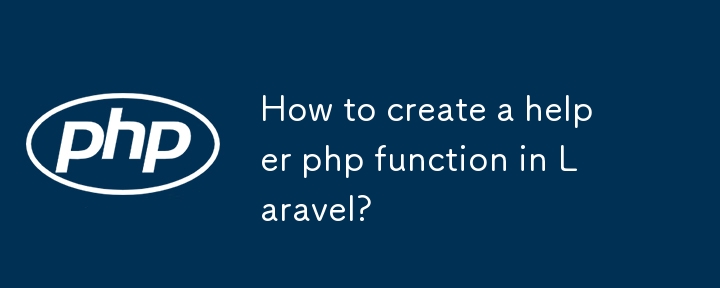
How to create a helper php function in Laravel?
Article Introduction:There are three common ways to create auxiliary PHP functions in Laravel. 1. Use helpers.php file: Create Helpers.php in the app/ directory, write the function, add a path in the autoload.files of composer.json and run composerdump-autoload to implement global calls; 2. Use macroable features: add custom methods to existing Laravel classes such as Collection through the macro() method, which conforms to the framework design style; 3. Create service classes: suitable for complex logic, such as creating HelperService class encapsulation methods and through dependency injection or app
2025-07-22
comment 0
408
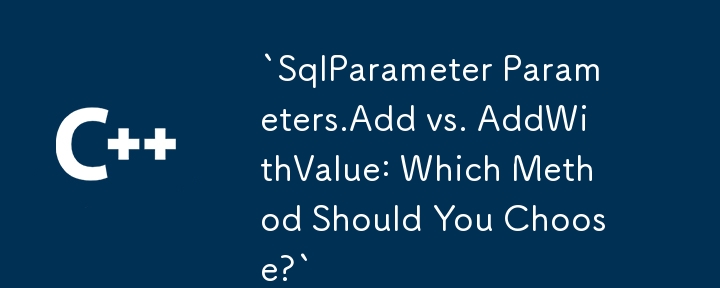

Dave The Diver: How To Catch Spider Crabs
Article Introduction:In Dave The Diver, there are some creatures that are not easy to catch. Or, catch alive that is. The spider crab is one of those very species, making it seem like the only way to bring these crustaceans back up to land is to viciously crack them up w
2025-01-10
comment 0
865

Prepare for Interview Like a Pro with Interview Questions CLI
Article Introduction:Prepare for Interview Like a Pro with Interview Questions CLI
What is the Interview Questions CLI?
The Interview Questions CLI is a command-line tool designed for JavaScript learners and developers who want to enhance their interview
2025-01-10
comment 0
1492
















